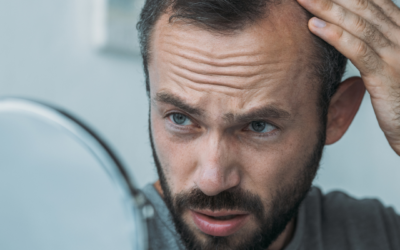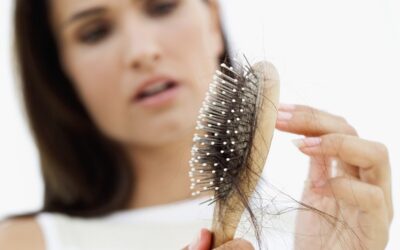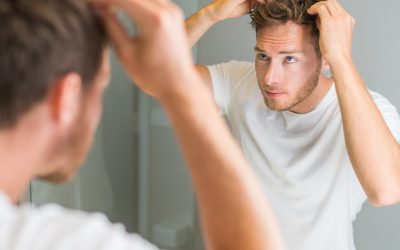
Alopecia areata is a common autoimmune skin disease causing hair loss on the scalp, face, and sometimes other areas of the body. According to the National Alopecia Areata Foundation, it affects as many as 6.8 million people in the United States and 147 million people worldwide. People of all ages, genders, and ethnic groups can develop alopecia areata. It often first appears during childhood and can occur differently for everyone who has it.
What are the symptoms of alopecia areata?
The only way to be sure you have alopecia areata is to make an appointment and get a diagnosis from a board-certified dermatologist. However, there are some common symptoms of alopecia that are important to recognize. Symptoms of alopecia areata may include:
- Small, round patches of hair loss on the scalp, beard area of the face, or other areas of the body with hair
- Hair loss and regrowth at the same time in different areas of the body
- Significant hair loss in a very short period of time
- Hair loss that’s mostly on one side of the scalp, instead of both sides
There is no way to predict the pattern of hair loss and regrowth you will experience or how severe or long-lasting it will be. It’s important to remember that alopecia areata is different for everyone who has it.
Is alopecia areata a lifelong condition?
When you have alopecia areata, your body’s immune system attacks healthy hair follicles, causing them to become smaller and slow the production of your hair to the point where it may not grow at all. Since the hair follicles are still alive, you may experience hair loss and regrowth at unpredictable and cyclical times for life.
Is alopecia areata genetic?
According to the National Alopecia Areata Foundation, Alopecia areata is known as a “polygenic disease.” This means that, unlike a single-gene disease, both parents must contribute several specific genes for a child to develop it. Because of this, most parents will not pass alopecia areata along to their children. With identical twins — who share all of the same genes — research shows there’s only a 55% chance that if one has alopecia areata, the other will, too. This is why scientists believe that it takes more than just genetics to cause the disease and that other environmental factors also contribute to people developing alopecia areata.
How do dermatologists diagnose and treat alopecia?
Dermatologists can diagnose alopecia in two ways, visually or under a microscope. In the cases where your form of Alopecia does not destroy hair follicles and the hair can grow back, your physician may prescribe a topical or oral medication depending on the severity of your alopecia.
Another newer form of treatment is called platelet-rich plasma, also known as PRP therapy. While PRP may not treat all forms of alopecia, it can be a great option for other forms because research has shown its efficacy in increasing hair count, hair thickness, and the growth phase of the hair cycle.
Hair Struggles?
If you believe you have alopecia or are struggling with hair loss and don’t know where to turn, the skin health experts at Forefront Dermatology are ready to help. To find the Forefront dermatologist nearest you, visit the locations page today.





